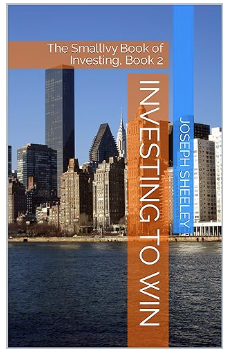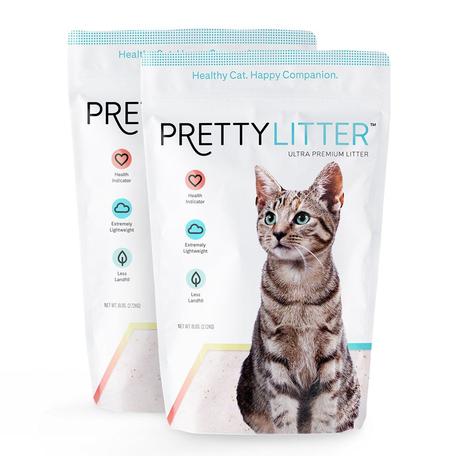
Tahira Allen Portrait (NHQ202302080001) by NASA HQ PHOTO is licensed under CC-BY-NC-ND 2.0
" data-orig-size="1024,732" sizes="(max-width: 1024px) 100vw, 1024px" data-image-title="Tahira Allen Portrait (NHQ202302080001)" data-orig-file="https://smallivy.files.wordpress.com/2024/04/52750736082_603049ea15_b.jpg" data-image-description="" data-image-meta="{"aperture":"0","credit":"(NASA\/Keegan Barber)","camera":"","caption":"","created_timestamp":"0","copyright":"(NASA\/Keegan Barber)rrFor copyright and restrictions refer to -\u00cahttp:\/\/www.nasa.gov\/audience\/formedia\/features\/MP_Photo_Guidel","focal_length":"0","iso":"0","shutter_speed":"0","title":"","orientation":"0"}" width="1024" data-medium-file="https://smallivy.files.wordpress.com/2024/04/52750736082_603049ea15_b.jpg?w=300" data-permalink="https://smallivy.com/2024/04/13/how-can-you-lose-money-selling-covered-calls/52750736082_603049ea15_b/" alt="" height="732" srcset="https://smallivy.files.wordpress.com/2024/04/52750736082_603049ea15_b.jpg 1024w, https://smallivy.files.wordpress.com/2024/04/52750736082_603049ea15_b.jpg?w=150&h;=107 150w, https://smallivy.files.wordpress.com/2024/04/52750736082_603049ea15_b.jpg?w=300&h;=214 300w, https://smallivy.files.wordpress.com/2024/04/52750736082_603049ea15_b.jpg?w=768&h;=549 768w" class="wp-image-24248" data-large-file="https://smallivy.files.wordpress.com/2024/04/52750736082_603049ea15_b.jpg?w=723" />Tahira Allen Portrait (NHQ202302080001) by NASA HQ PHOTO is licensed under CC-BY-NC-ND 2.0Many new investors have started to get into covered call writing. The possible returns of 50-100% per year, when holding index funds long have returns in the 10-12% range, certainly seem tempting. Options traders will also tell you that it is safer than just buying stocks. But is this true? How is it possible to make greater returns while taking less risk?
In this post, we’ll go deep into covered call writing and talk about how it works. More importantly, we’ll talk about the risks you are taking and how you can lose money. Yes, you can still lose money writing covered calls.
(Note, this site contains affiliate links. As an Amazon Associate I earn from qualifying purchases. When you click on an affiliate link and buy something, The Small Investor will get a small commission for the referral. You are charged nothing extra for the purchase. This helps keep The Small Investor going and free. I don’t recommend any products I do not fully support. If you would like to help but don’t see anything you need, feel free to visit Amazon through this link and buy whatever you wish. The Small Investor will get a small commission when you do, again at no cost to you.)
What are calls?
Options are legal contracts where investors agree to buy or sell shares of stocks for a specific price (called the strike price) before a certain date (the expiration date). They are called “options” because the person who buys them has the option to use them (exercise them) or not. If they are not used before the expiration date, they expire worthless and both parties walk away. The person who sells the option (called the option writer) and agrees to buy or sell the shares if the option buyer chooses to use the option gets a small amount of money in exchange. This money is called a premium.
To facilitate creation of these legal contracts, exchanges require options be sold in specific increments of 100 shares per contract and that expirations be on specific dates. They also require the prices at which the shares are bought or sold be at $5 increments ($2.50 increments or even $1 increments for lower-priced shares). This allows people who trade options to know at which prices they are likely to find options for sale (or be able to trade options at) so that they can devise strategies involving buying or selling many options at once. These strategies get really complicated quickly, so we won’t cover them in this article.
I’ve been investing for more than 40 years. In that time, I’ve learned a lot about what to do and what not to do. I’ve refined it all down into what I call the “Investing to Win Method.” I’ve put it all in my newest book, Investing to Win. Whether you’re a new investor or someone who is really not getting the kind of returns you desire, I think you can benefit greatly from reading this book. Right now it is only $21.99 for the print version and $4.99 as an e-book!

Investing to Win
The options that allow the buyer to purchase shares at a specific price are called call options. (Those that allow the buyer to sell shares of stock he has at a specific price are called put options.) Obviously, the main purpose of put options are to serve as insurance against a sudden loss due to a drop in share price. The main purpose of call options are to be able to make a quick profit off of a stock that goes up rapidly while putting little money into the trade.
Put options are the most useful and straightforward options to use and have a valid purpose from time-to-time. For example, let’s say that you had 1000 shares of XYZ company that you bought last January and had made $50,000 during the last year. It is December of the same year, so for taxes you’d like to wait to sell the shares into the next year, both when it becomes a long-term capital gain and in the next year where you could delay paying taxes for longer. But you’re worried that there could be a big drop in the price of the stock and you’d lose a lot of your gain.
The price of the stock is currently at $102 per share. You therefore buy 10 February $100 puts on the shares and pay a premium to the option writer of $100 per option, for a total of $1000. Each call lets you sell 100 shares for $100 per share before they expire in February, so if the stock drops below $100, you could exercise the option and sell the shares for $100 each. You have locked in your profit up to $100 per share, minus the $1000 you paid for the options, so it would be like you were selling at $99 per share. If the stock goes higher, you could just not use the option and sell the stock in the market at the higher price.
Do you know how to select mutual/index funds to maximize your returns? If you’d like a little guidance, check out Sample Mutual Fund Portfolios . This gives sample portfolios you can use for reaching all sorts of different goals, including retirement.

What are covered calls?
Many people buy options to speculate. The option buyer stands to make a lot of money if the shares go up than he would buying the shares since the price per option (the premium) will generally go up $100 for every dollar the stock goes up. So, in the previous example if the stock had gone up immediately to $120, you would have seen your 1000 shares go up in value by $18,000. If you had bought calls with a strike price of $100 instead, your options would go up in price to around $22,000 per option, so if you had paid a $4000 premium for the options you would have made $18,000 on the options as well. Your stock gain would have been 18%, where your option gain would have been 1800% because the shares cost $102,000 but the options only cost $4000 for the same gain! You are able to resell the options you purchased before they expire if you can find a buyer (which you generally can at the right price), so you could sell the calls in that case and make a really nice profit in a short period of time, enough to make up for the taxes. (Important, this is called a “sell to close,” where you close out the position. If you do this wrong and sell the options to open, you could open another position instead of closing the one you have!)
Given this, you may wonder why someone would be willing to sell you the calls in the first place. The answer is that most option contracts expire worthless, meaning that the seller (writer) gets to keep the premiums without needing to actually buy or sell the shares. If someone had sold you the calls for $4000 in the previous example and the shares stayed at the same price or went down between the time you bought them and the expiration date, you would not exercise them and the seller would just keep your $4000. She could then go ahead and sell another 10 calls during the next period and collect premiums throughout the year in this way. Do this eight times in a year, and the option writer collects $32,000 in premiums.
There is obviously a danger in doing this. If the seller were to sell you 10 $100 calls and the stock went to $120, you could exercise them and she would need to go into the market and buy the shares for $120,000 and sell them to you for $100,000. She would then lose $16,000 (The $20,000 for the shares minus the $4000 she collected in premiums). This would wipe out a lot of the money she was making selling options during the year. If the stock went up to $200, she would lose $96,000! That could bankrupt her.
The way she can protect herself is to actually own the shares. Then, if the stock price went up, she could just sell the shares she owns to you instead of needing to buy them in the market. Selling call options when you don’t own the shares is called selling naked calls and is very risky. Selling calls when you own the shares is called selling covered calls and is far safer. If she owned the shares, the most she could lose would be based on what she paid for the shares. If she had bought the shares at $90, for example, selling them to you she would still make a profit of $10,000 on the sale. This would be in addition to the profit from keeping the $4000 premium. She would therefore make $14,000 in total if the stock stayed above $100 and the calls were exercised (used). If the stock dropped below $100 per share and stayed down, the calls would expire and she could keep the $4000 and sell calls again.
If the shares were worth $100,000 and she were able to sell calls 6 times per year for $4000 each time without needing to sell the shares at any point, she would make $24,000 over the year. That is a 24% return for the year, more than double the average return of 10% seen just holding shares of index funds. Many times the premiums of options will be priced such that you can make returns in this range, or even as much as 40% or 50% per year! This is like getting a really good dividend from the stock even if the stock pays no dividend. (If it does pay a dividend, you keep that, too!) Can you really make these kinds of returns? Theoretically. But let’s look at reality.
We actually use Pretty Litter and really like it. The bags are light and delivered right to your door. There is no odor. Clean-up is a breeze, just a few seconds a day. And rather than dealing with clumps from urine, is just gets absorbed into the litter and you just change out the liter every few weeks. It even changes colors if you cat has an issue so you can get them checked out!
Give it a try! Click on the picture below to get started and support The Small Investor when you do.

How you can lose money
Yes, you absolutely can lose money writing covered calls. The reason is that since you own the shares, if the price of the shares drops enough, the amount you lose on the shares can exceed the amount you receive in premiums, at which point you are losing money. For example, in the previous example if our seller had sold 10 calls with a strike price of $100 and then the stock dropped to $80 per share, she would now have a $6000 loss on the position (a $10,000 loss on the shares since she bought them at $90, minus the $4000 she collected in premiums).
Now, all is not lost since she still owns the shares, so she could wait for them to go up above $90 again and erase her loss. (Note: It is not always the case that a stock will go back up and some companies go bankrupt or get bought out for low prices, so don’t think you can always wait out a downturn. And even if the stock comes back, you lose the opportunity to invest the money somewhere else that provided a bigger return during the period.) In fact, she reduced her potential loss a little by selling the calls. If she had just held the shares, she would have been down $10,000 at this point instead of just $6000 because the premiums she collected offset the loss on the shares a bit. Each time she is able to sell a set of calls and keep the premiums, she reduces her cost basis for the position a little, so the price the stock can drop to before she starts losing money keeps decreasing with time. This is why selling covered calls is seen as even safer than just holding stocks long.
There is another issue with this scenario: When the stock goes down in price, the option seller then needs to figure out what to do next. Getting that 30-50% return requires you sell options regularly throughout the year. If you wait for the stock to go back up, you might only collect 4% in premiums instead of 50% since there is a long period in the year where you don’t have any options written. You could go ahead and write calls at a lower strike to keep the premiums coming in, say at $85, but then if the stock goes back up above that price you could be forced to sell the shares at a loss.
Even if the shares go up in price it isn’t great for the option seller. Let’s say that the shares went to $110 for our option seller. She would collect $4,000 in premiums and $100,000 for selling the shares at $100 for a $14,000 profit, but she could have gotten $20,000 if she had just held and sold the shares. Plus, now she only has $104,000 but needs $110,000 to buy 1000 shares of the stock again to be able to sell another 10 options. If she goes ahead and buys 9000 shares at $110,000 and sells 9 options, keeping the rest in cash or investing it elsewhere, if the stock goes back down to $100 she is looking at a loss again. You need to buy high sometimes to keep the options premiums coming in, or wait for a better price and see your returns from premiums going down.
Sometimes it works out really well where the shares just trade within a range and you are able to collect a lot of premiums, but in others the shares will drop in price and then recover after you have already sold calls at a lower strike price, causing a loss, or shoot up beyond your strike price, allowing you to make a profit but causing you to lose the shares and then end to buy at a higher price. Because you are limiting your gains and stocks tend to gain more than they lose, most people are better off just holding the shares than selling covered calls, at least if investing for a long time.
One approach is to do what is called a buy-write technique where you just buy a stock or index at whatever price it is selling for and then write a call near the price, maybe a little above the price you pay. If the stock goes up and you lose the shares, you just buy the shares back at the higher price and write another call. If the shares drop, you just collect the premiums and write another call at the lower price. Doing this you can expect the gains you make from the times when the stock goes up and you sell at a gain to make up for the losses from the times when the stock goes down and you sell at a loss. You therefore make money on the premiums you collect.
Still, you will not make 30-50% returns. If you use this strategy for a big portfolio, you can expect to make returns in the 5-10% range. There will be some great years where you might collect 20%, but there will be others where you only make 1% or even lose a little. You can also buy a buy-write fund like the Eaton-Vance Buy-Rite Fund (ETV), where professionals take care of everything for you in exchange for a fee and you just get pay-outs from the fund. But you’ll find that their returns will be in the 6-8% range, where a good index fund that just holds stocks long will make around 10% long-term.
The bottom line
Covered call writing can be useful for some purposes. One time is when you need to generate a regular income from a stock portfolio but interest rates are so low that you can only get 2-4% from bonds and dividends. You can get a relatively safe 6-8% return from selling covered calls or buying a buy-write fund. This is true in all sorts of markets and regardless of interest rates. Having a buy-write fund in your portfolio will also help smooth out volatility by providing steady income, albeit at lower returns than you’ll see from your more volatile pure stock funds.
You might also have a stock that has gone way up in price, outstripping earnings and causing a really high PE ratio. You still want to own the shares because you believe in the company, but feel that the company is unlikely to go anywhere for a few years. You could then write some covered calls on the shares while you wait for earnings to catch up with the price. If the shares fall back a bit, you’ll do better than you would have just holding the shares. If the stock goes no where, you’ll have a positive return that can be in the 10%+ range instead of collecting nothing for the period. The key is only doing this when the stock is way up and you can’t believe it will go much higher for a while.
If you’re investing long-term, however, and don’t mind the volatility, you’ll do a lot better just buying stocks long-term. Holding index funds will return 2-4% more on average than holding a buy-write fund on those same indices. Holding quality companies long-term will make a lot more than holding these same companies and writing covered calls. You’ll find a lot of hype for covered call writing, but it really isn’t all that people make it out to be. There is a reason these people are generally selling classes rather than just making their money writing calls.
Follow me on Twitter to get news about new articles and find out what I’m investing in. @SmalllIvy_SI
Disclaimer: This blog is not meant to give financial planning or tax advice. It gives general information on investment strategy, picking stocks, and generally managing money to build wealth. It is not a solicitation to buy or sell stocks or any security. Financial planning advice should be sought from a certified financial planner, which the author is not. Tax advice should be sought from a CPA. All investments involve risk and the reader as urged to consider risks carefully and seek the advice of experts if needed before investing.
